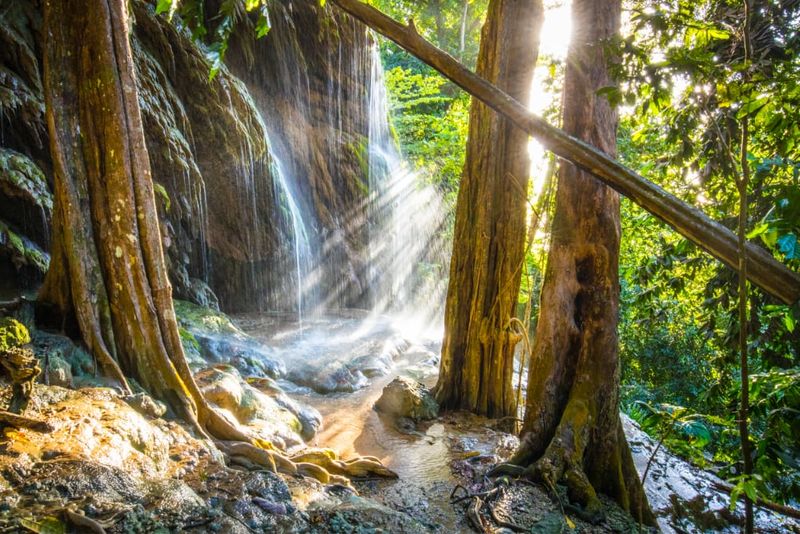The Dales
A pristine area of forests, gorges and freshwater streams, the Dales is an internationally significant wetland and one of Christmas Island’s most iconic sites.
The Dales is located on the western coast of the island. It is home to seven watercourses, three of which have springs and flowing water all year round.
These streams originate from underground caves and flow into the ocean. Over time, they have worn a series of gorges and natural terraces into the landscape.
The Dales’ unique wetland ecosystem is listed as a Wetland of International Importance under the Ramsar Convention.

Plants of the Dales
Surrounded by deciduous forest, the Dales’ vegetation ranges from tall plateau rainforest to lower coastal shrubland.
Tall strands of Tahitian chestnuts (Inocarpus fagifer) grow at Hughs Dale and Anderson Dale, and the rare ribbon fern (Ophioglossum pendulum) can be seen growing from trees.
Meanwhile, endemic species such as the arenga palm (Arenga listeri) and Ridley’s orchid (Brachypeza archytus) are common throughout the Dales.
Animals of the Dales
The Dales is an important habitat for Christmas Island’s endemic blue crabs, who need freshwater streams to reproduce. Many other land crabs live in the area, and millions of red crabs pass through as part of their annual migration.
Birds such as the Abbott’s booby, red-footed booby and brown booby breed within the Dales. Numerous migratory bird species use the wetlands as a staging site, and vagrant birds also drop by.
Christmas Island’s only native freshwater fish, the brown gudgeon, lives in the streams of the Dales.
Visiting the Dales
You will need a 4WD to get to the Dales. There are two walking tracks, to Hughs Dale Waterfall and Anderson Dale.
The beautiful Merrial Beach is also within the Dales.
Vehicle track closures during red crab migration
Vehicle tracks to the Dales and Blowholes may be closed during the red crab migration and return of juvenile red crabs.
During these periods, the tracks will be closed until 10.30 am every day (the time of peak crab activity).
Rangers will check each track between 10.30 am and 11.00 am to determine if it can be opened to vehicles.
If the track can be opened, it will remain open until 3.30 pm, by which time all vehicles must be out of the area. If the track cannot be opened, it will remain closed until the following morning’s check.

